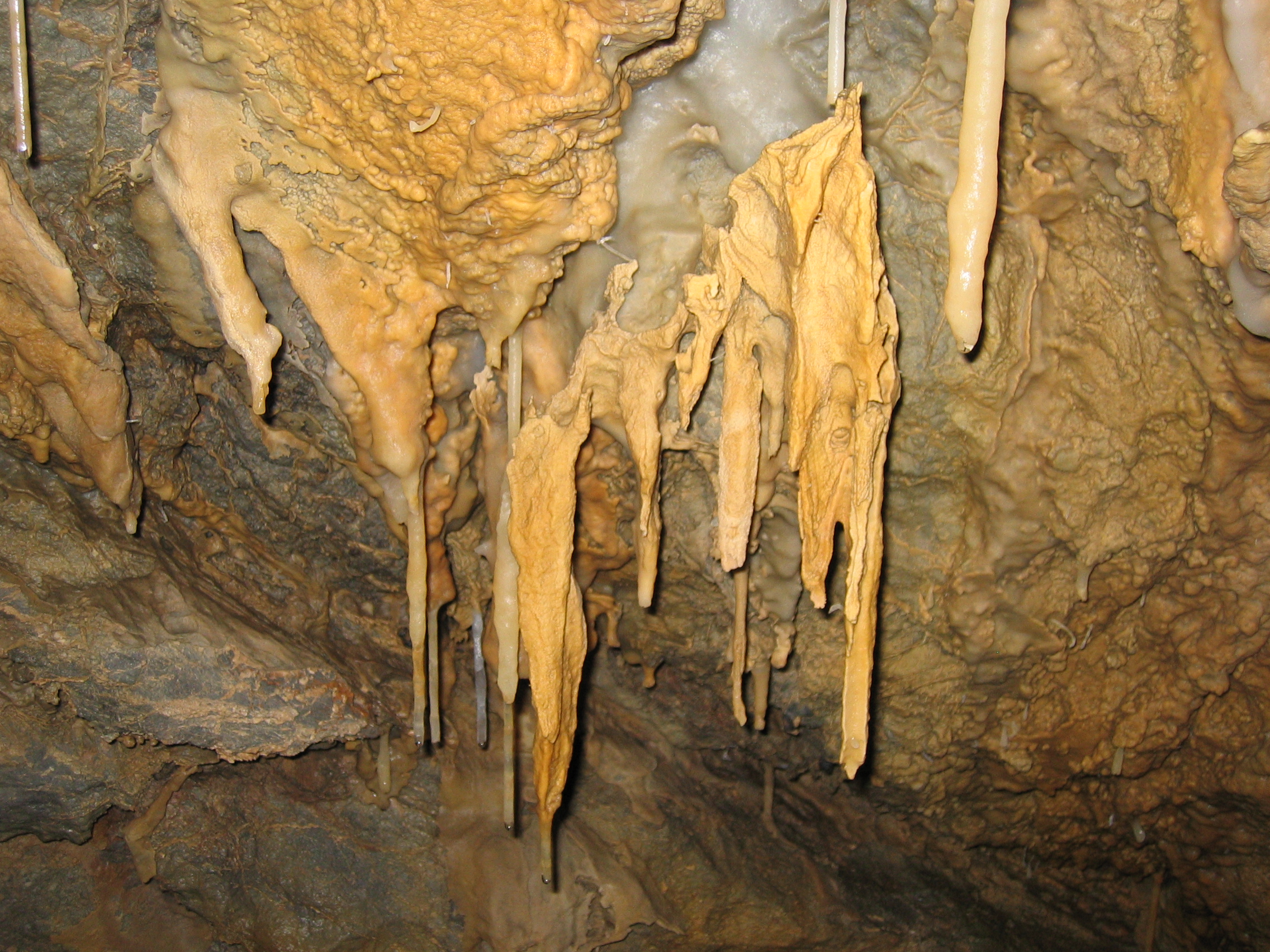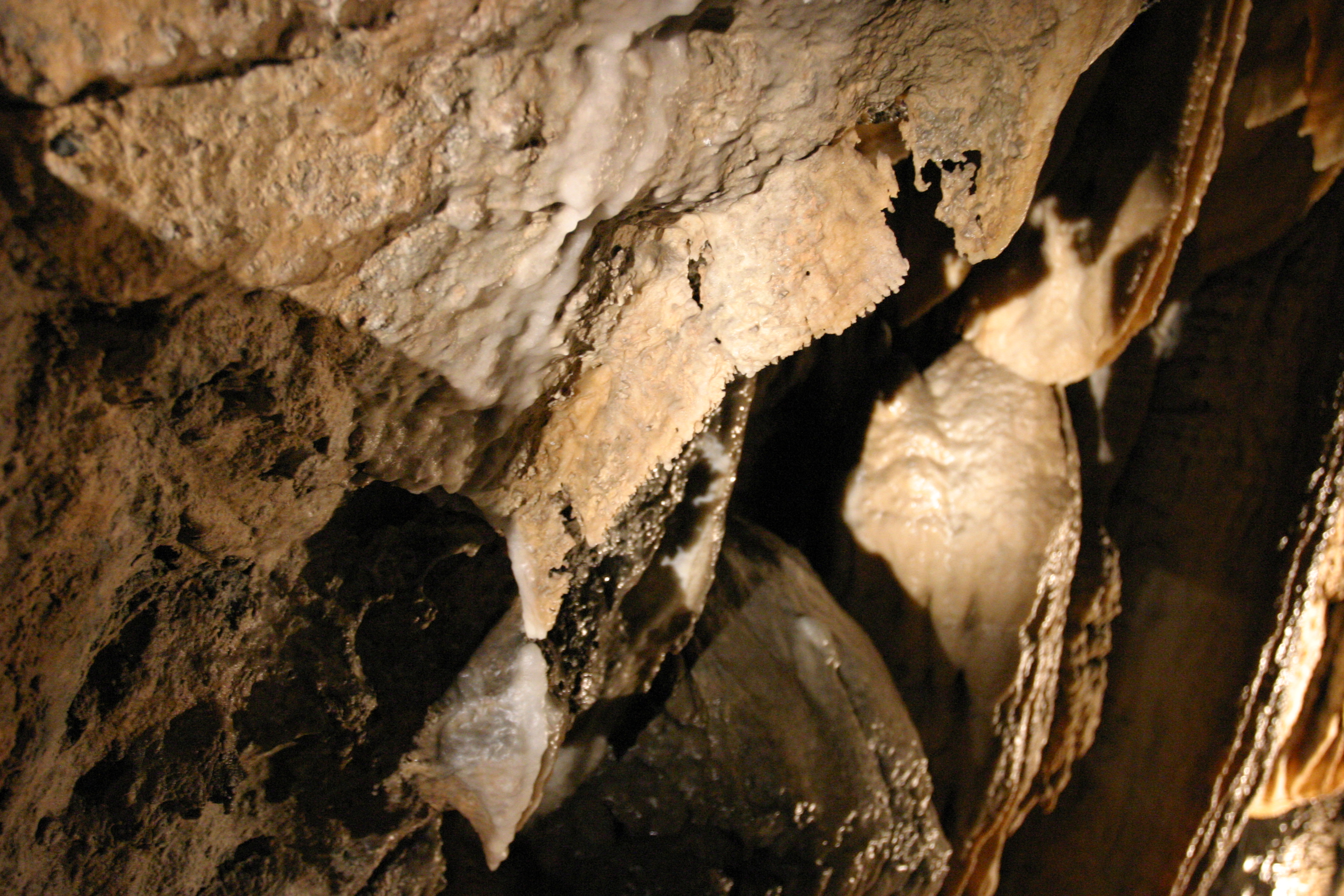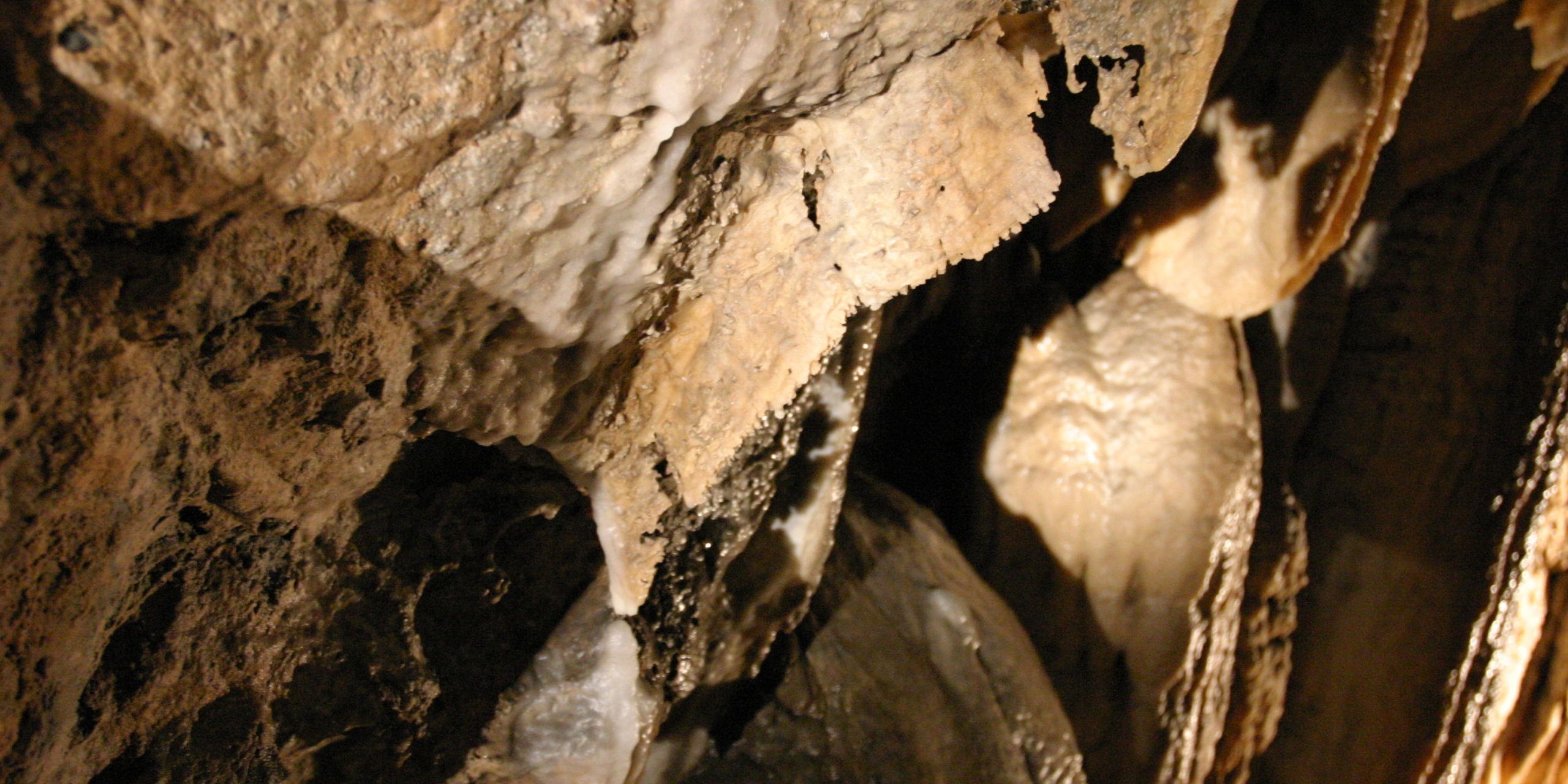English below.

Diramazione del paradiso: le concrezioni gialle, morte da molto tempo, appaiono fortemente corrose dall’acqua di condensazione e sembrano staccate dalla roccia sulla quale si sono accresciute.
Tunnel of paradise: the yellow formations, long dead, appear heavily corroded by the condensation water and they appear to be detached from the rock from which they grew on.
Finché le concrezioni calcaree vengono alimentate dall’acqua mostrano colori vivaci ed appaiono lucide a causa del velo d’acqua che le riveste e le alimenta. La Grotta del Vento è, assieme alla Grotta di Frasassi, .l’unica ad avere viva la quasi totalità del patrimonio concrezionale.
Ma ogni regola ha le sue eccezioni, e in qualche punto si possono osservare alcune concrezioni opache e dal colore spento. Sono concrezioni morte che, abbandonate definitivamente dall’acqua, hanno cessato di crescere. Appena cessa l’alimentazione inizia un lento processo di deterioramento che in tempi lunghi (anche migliaia di anni) porta inesorabilmente alla loro scomparsa.
Appena una concrezione viene abbandonata dall’acqua può apparire per qualche tempo più bella, poiché sulla sua superficie appaiono miriadi di puntini brillanti che riflettono la luce delle lampade, specie se le luci sono in movimento. Sono le sfaccettature dei cristalli di calcite, ancora speculari.
Nel giro di pochi anni però vengono aggredite dalla condensazione del vapore acqueo che abbonda nell’aria della grotta, acido per l’abbondante presenza di anidride carbonica liberata dal processo di crescita delle concrezioni vive. Da levigate divengono ruvide e pian piano la concrezione si consuma, si opacizza e riduce le proprie dimensioni. Contemporaneamente l’acqua di condensazione, assorbita dagli spazi capillari che separano i cristalli di calcite che compongono la massa concrezionale, agisce anche all’interno, indebolendola ed annullandone la limpidezza e la traslucidità. La porosità che ne consegue ne riduce anche il peso specifico.

Sala del Ciondolo: questo drappeggio morto, assottigliatosi fino a scomparire in alcuni punti è destinato nel tempo alla dissoluzione totale. Non però alla sua estremità inferiore, dove sta rivestendosi di un nuovo velo di concrezione viva.
Pendant Room: this dead curtain, so worn away that it disappears in some points is destined in time to dissolve completely. Not however on the lower part, where it is getting covered with a new film of growing formation.
Ciò non avviene invece nelle concrezioni vive, continuamente alimentate da acqua di percolazione che, ricca di bicarbonato di calcio, la fa crescere, proteggendola dall’aggressione della condensa.
Nell’osservare le concrezioni morte spesso è possibile osservare che appaiono come staccate dalla roccia sulla quale si sono accresciute. Ciò dipende dalla maggior solubilità dei calcari impuri rispetto a quella della calcite pressoché pura che compone le concrezioni.
LIFE AND DEATH OF THE FORMATIONS
Until the limestone formations have water flowing over them their colours are bright and appear shiny due to the film of water over them that makes them grow. The Grotta del Vento is, together with the Frasassi Cave, the only one to have almost all of the patrimony of the formations alive and still growing.
But there is an exception to every rule, and in some points opaque formations with dull colours can be seen. They are dead formations which, abandoned permanently by water, have stopped growing. As soon as the water stops flowing a slow process of deterioration begins which over long periods of time (even millions of years) inevitably causes them to disappear.
As soon as a formation is abandoned by water for a while it can appear more beautiful , since on its surface a myriad of sparkling dots appear which reflect the light of the lamps, especially when the lights are moving. They are facets of the calcite crystals, still specular.
Within a few years however they get attacked by the condensation of the water vapour which abounds in the air of the cave, acidic due to the large presence of carbon dioxide released by the growth process of the living formations. From smooth they become rough and slowly the formation wears away, becomes opaque and reduces in size. At the same time the condensation water, absorbed by the capillary spaces which separate the calcite crystals which make up the mass of the formation, acts also on the inside, making it weak and canceling its clearness and translucence. The porosity it attains also reduces its specific weight.
This does not happen with the living formations, that have percolation water continually flowing over them which, rich in calcium bicarbonate, makes it grow, protecting it from the attack of condensation.
Looking at dead formations it is often possible to see that they appear to be detached from the rock from which they grew on. This depends on the larger solubility of the impure limestone compared to that of the practically pure calcite of which the formations are made of.







